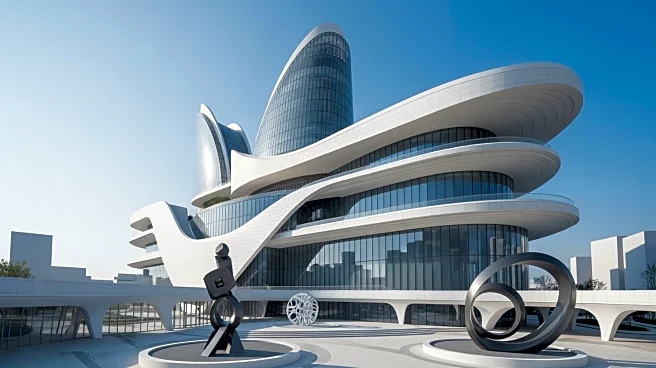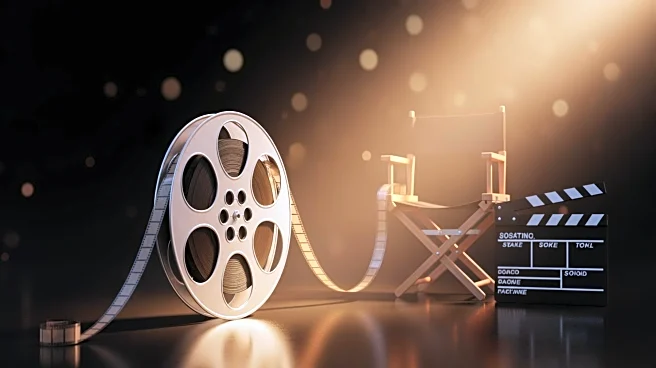What's Happening?
The Lucas Museum of Narrative Art, founded by George Lucas and Mellody Hobson, is scheduled to open on September 22, 2026, in Los Angeles' Exposition Park. Designed by architect Ma Yansong of MAD, the
museum aims to explore storytelling as a universal language that connects people and captures the human experience. The museum's permanent collection includes over 40,000 works, featuring narrative art, comic art, children's book illustrations, and cinematic artifacts. The galleries are themed around aspects of the human experience, such as love, family, and adventure. The museum also includes two theaters, a library, a restaurant, a cafe, a retail store, and community spaces, all situated on an 11-acre campus.
Why It's Important?
The opening of the Lucas Museum of Narrative Art represents a significant cultural addition to Los Angeles, enhancing the city's status as a hub for arts and entertainment. The museum's focus on narrative art and storytelling offers a unique perspective on how art can reflect and shape human experiences. It provides a platform for diverse voices and stories, potentially influencing public discourse and cultural understanding. The museum's extensive collection and thematic galleries may attract visitors from around the world, boosting tourism and local economy. Additionally, the museum's educational and community spaces could serve as valuable resources for local schools and organizations, fostering creativity and learning.
What's Next?
As the opening date approaches, the museum will likely engage in promotional activities to attract visitors and establish partnerships with local and international cultural institutions. The museum may also develop educational programs and events to engage the community and enhance its role as a cultural landmark. The success of the museum could inspire similar initiatives in other cities, promoting the importance of narrative art in understanding human experiences. The museum's impact on the local economy and cultural landscape will be closely monitored, potentially influencing future investments in arts and culture.












